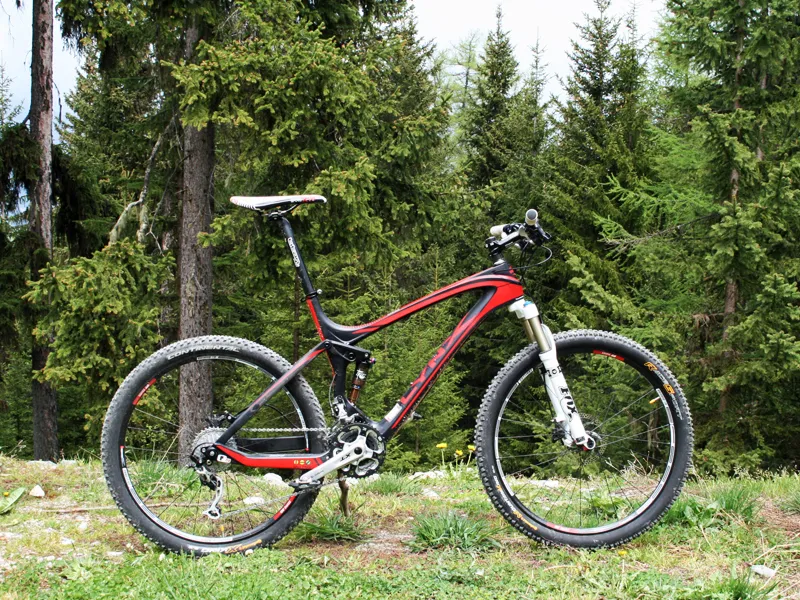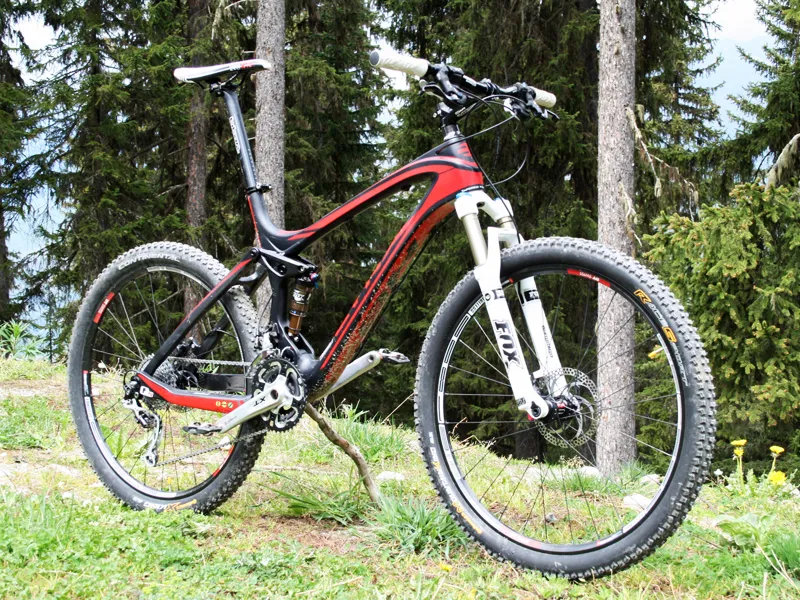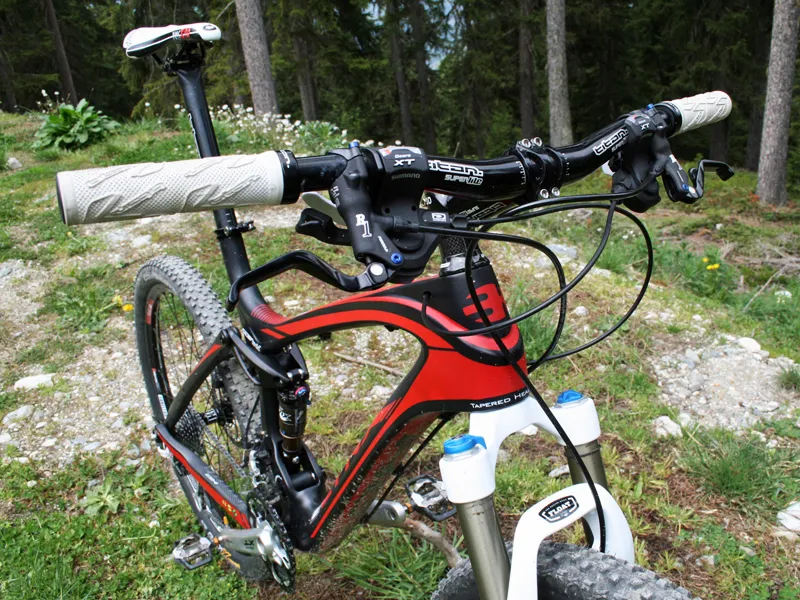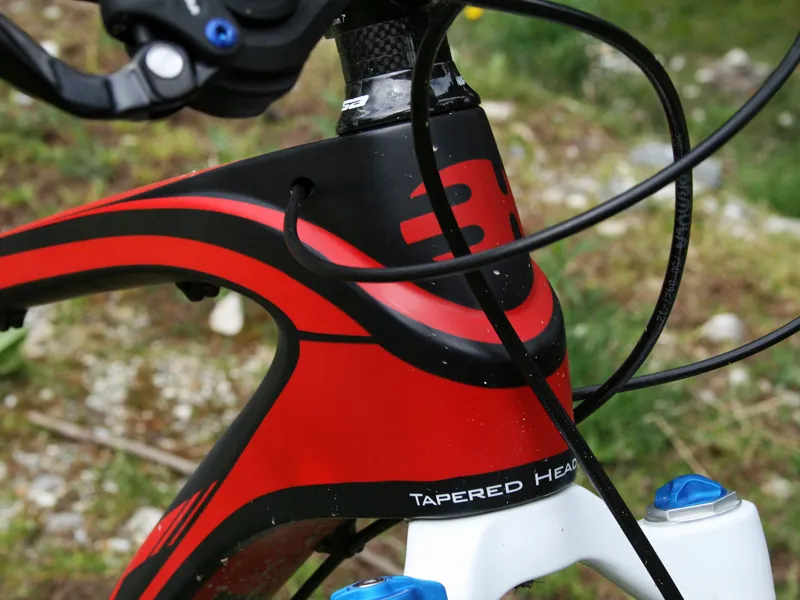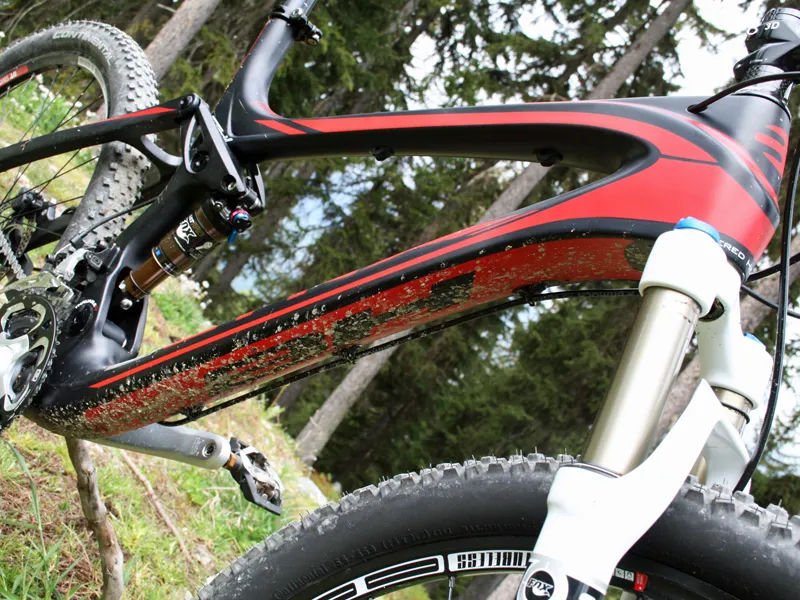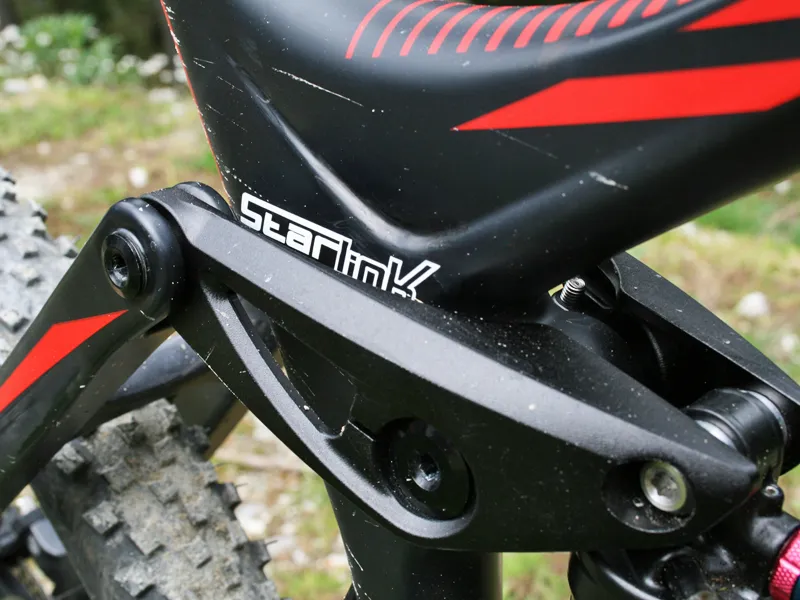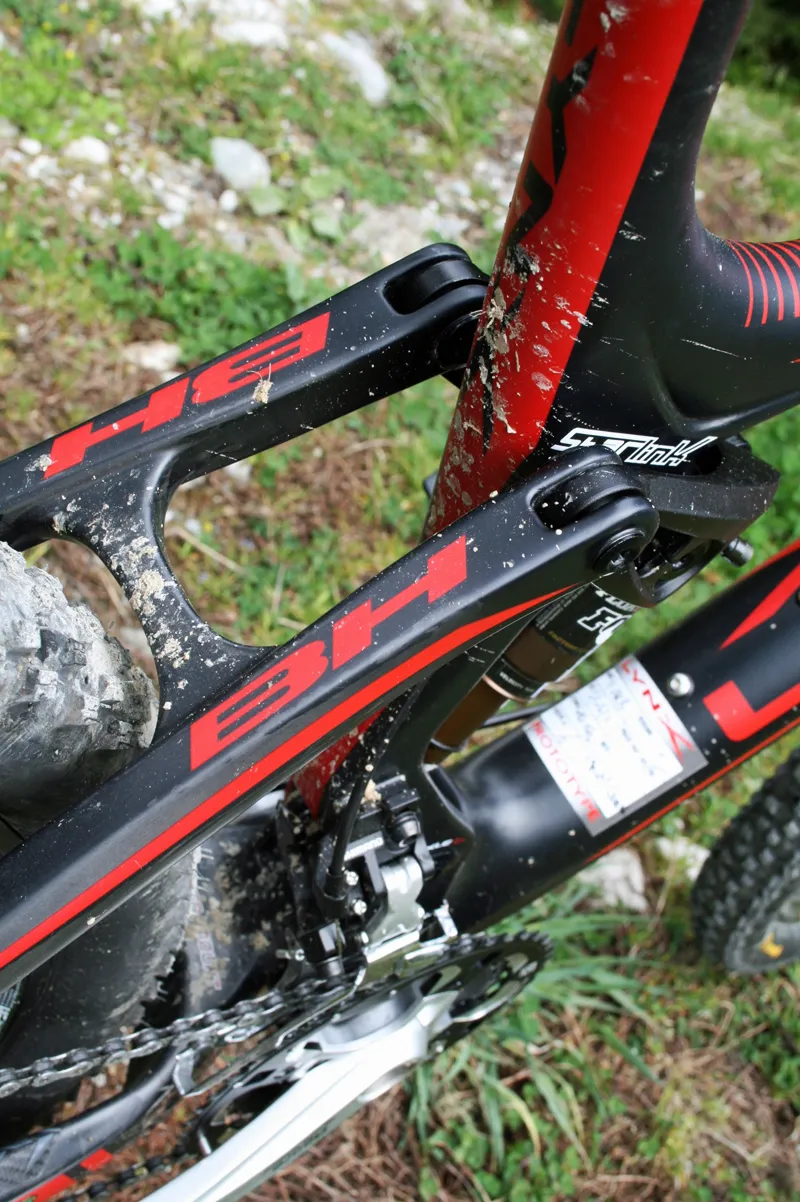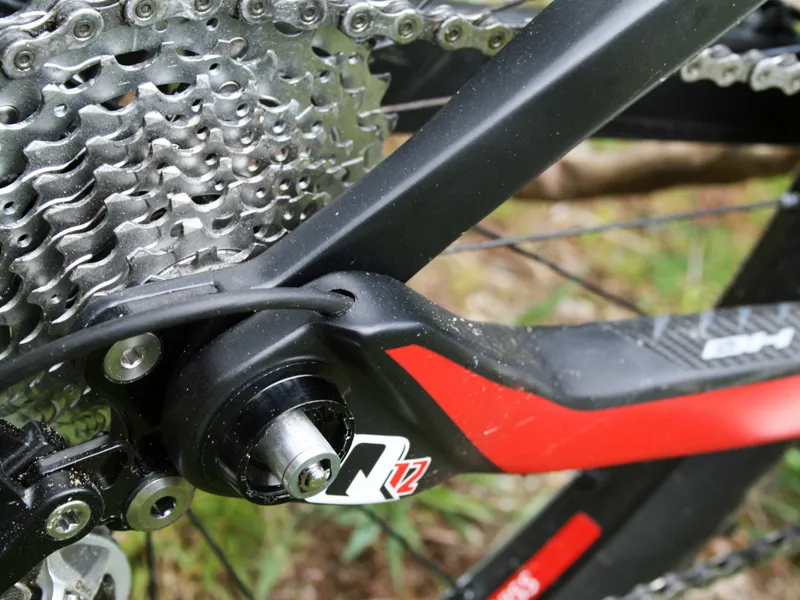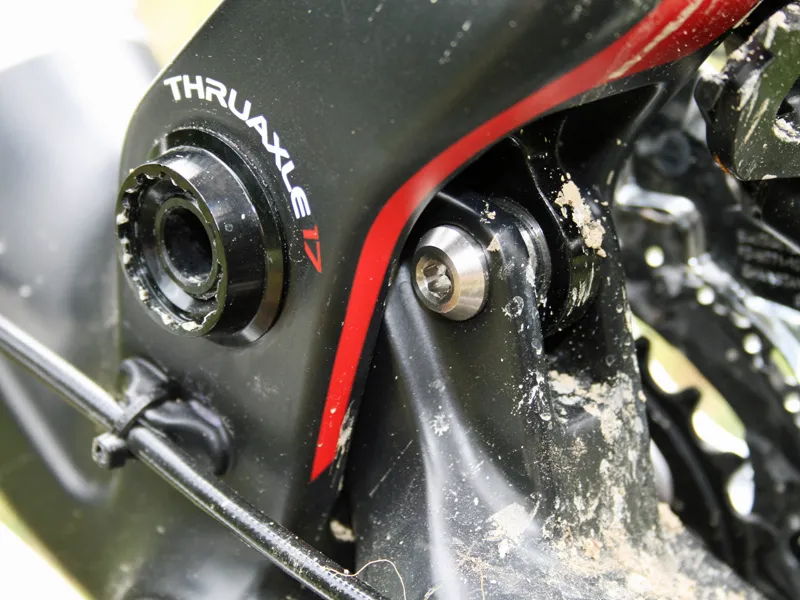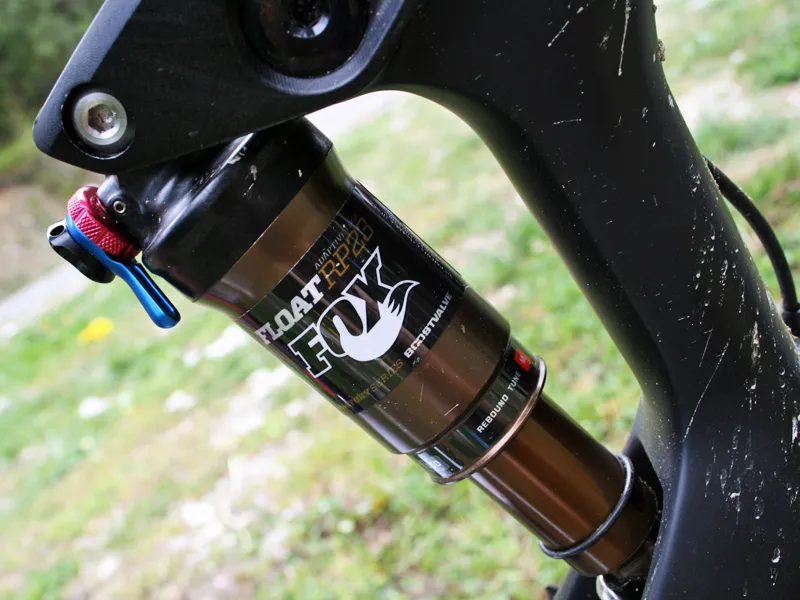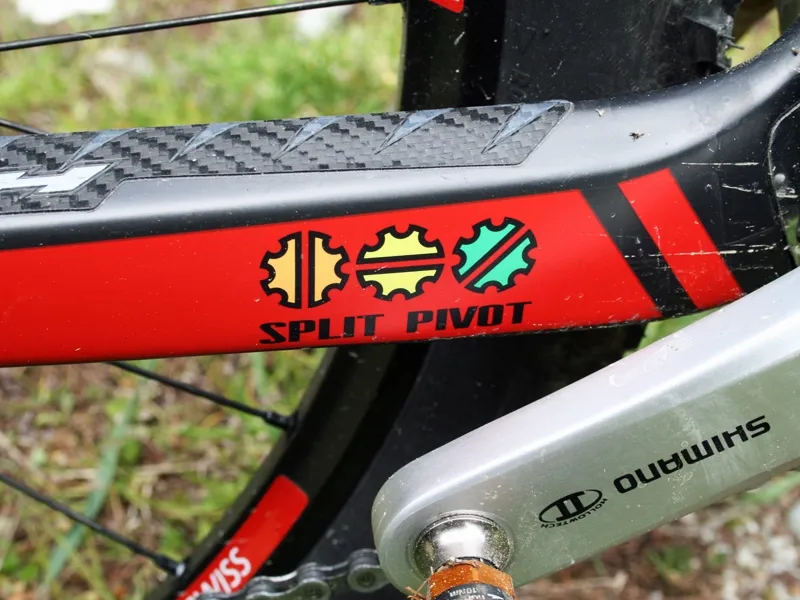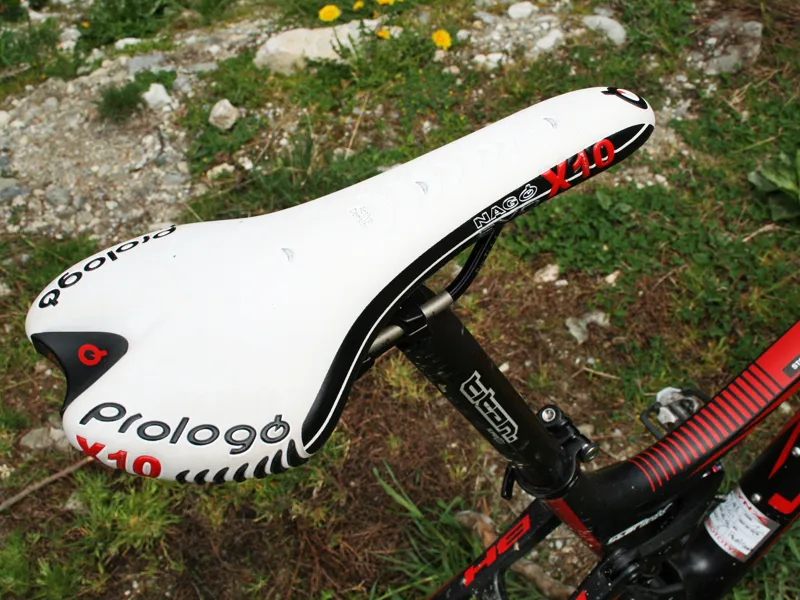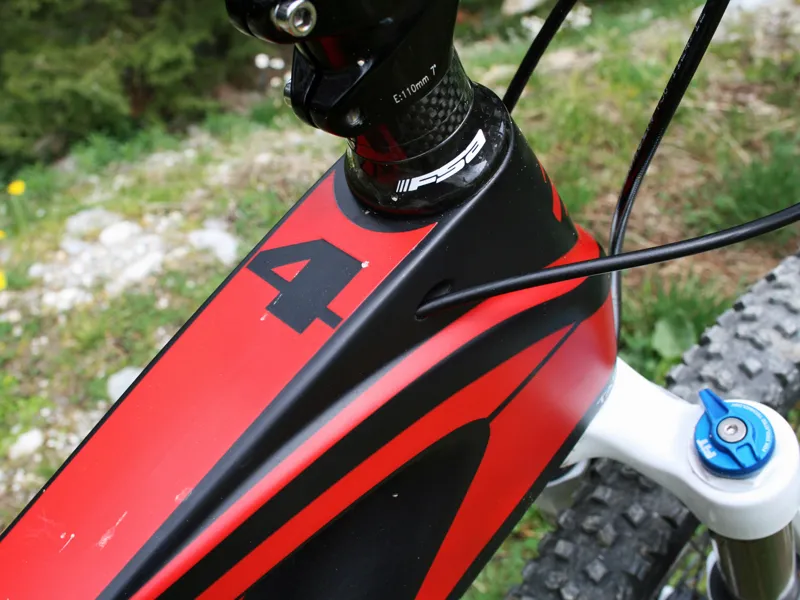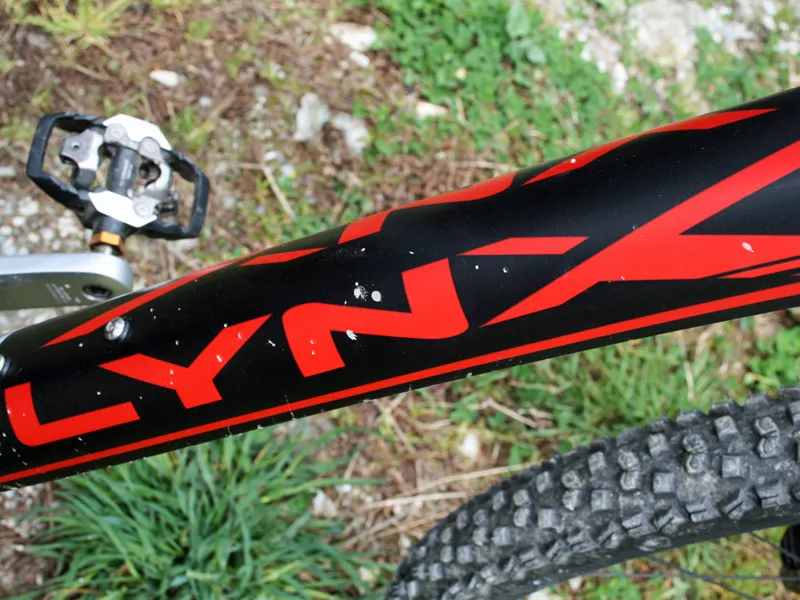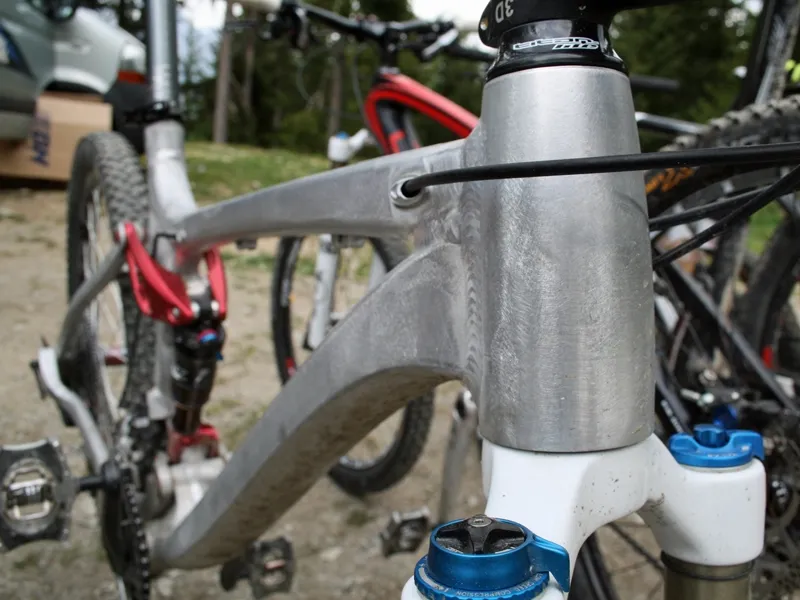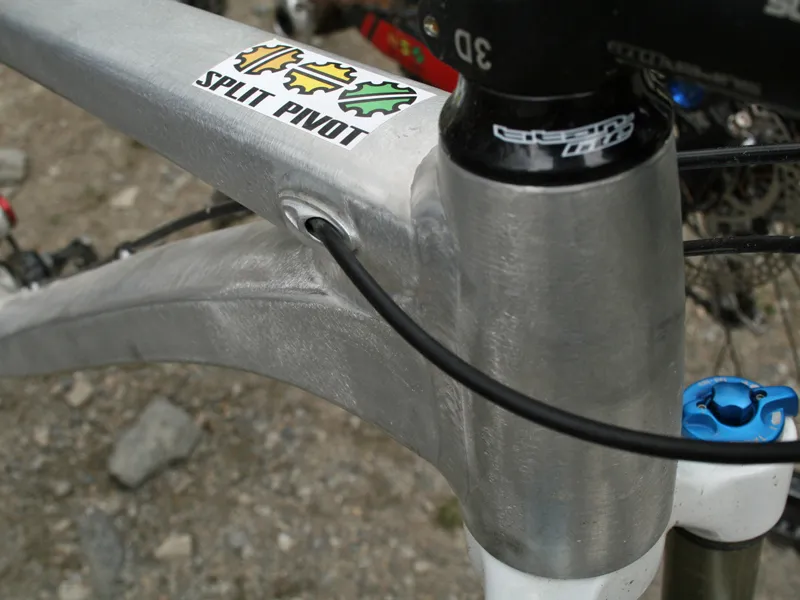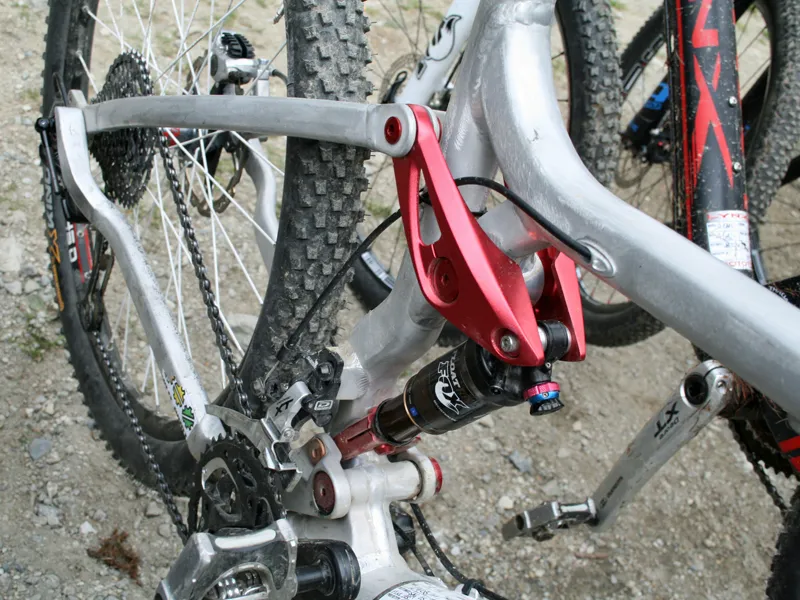Certain clichés spring to mind when a European bike company announce they're launching a new 100mm-travel race bike – stems that stretch towards the horizon, frames that are either so stiff that they give you backache just looking at them or so light and flexy that it's hard to steer a straight line, and suspension set up so firm that it's barely worth having.
So when Spanish brand BH announced they'd teamed up with suspension guru Dave Weagle for their latest offering, our interest was piqued. He's the man behind highly successful, big-hitting bikes like the Iron Horse Sunday and Ibis Mojo, to name just two.
The result is the Lynx 4. Lynx – a play on the word linkage, not a homage to the favourite deodorant of the UK's teenage boys – is the 'platform' name which will apply to all of BH's forthcoming new full-suspension models, while 4 denotes the amount of travel in inches. The bike uses Weagle's Split Pivot design, which can also be found on new models from Devinci, Morewood, Spooky and Seven. But it looks markedly different from those machines.
In fact, although both Weagle and BH will hate us saying this, the Lynx 4 will inevitably draw comparisons with Trek's Fuel EX. This is perhaps unsurprising when you consider that both bikes use a concentric rear axle pivot and a short seat-tube-mounted rocker link to drive the shock. Key differences between the Lynx's suspension and that of the Fuel EX include the use of a floating lower shock mount and a custom tuned Fox RP23 shock – the 2012 model with Adaptive Logic – in place of the Trek's twin chamber DCRV unit.
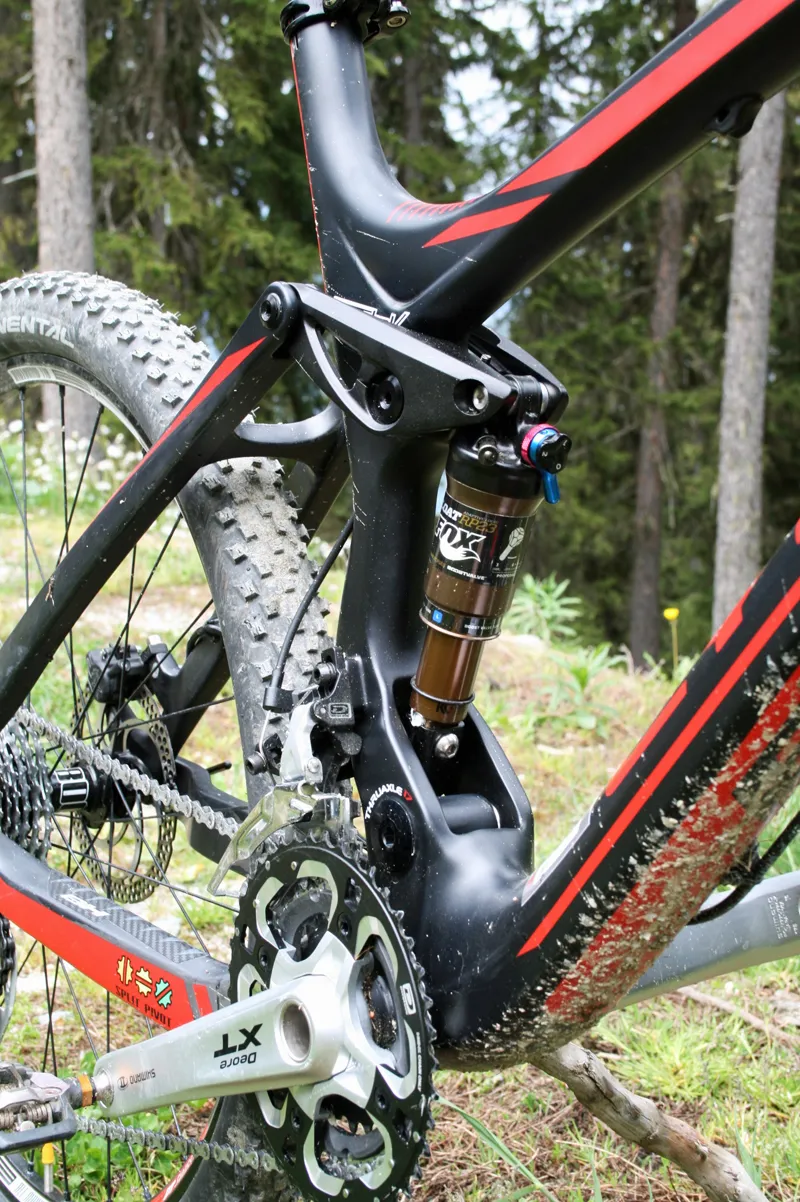
It may look complicated but the Lynx 4 actually has a single pivot rear end
This Boost Valve shock is key to the performance of the BH bike – it's designed to be run with minimal air pressure (150psi) and low-speed compression damping, and more sag than usual (25 percent rear, 20 percent front, to give a super-plush (for a 100mm bike) feel. That's all very well for descending, but won't the lack of platform damping be a hindrance on climbs?
Not according to Weagle, who says that the amount of anti-squat built into the Split Pivot design – 150 percent more than on BH's current bikes – does away with the need to use compression damping as "a Band Aid for pedalling". The result, he says, is a bike that's "supple over small bumps but pedals crisply out of the saddle".
Weagle reckons that current mountain bike shocks are overdamped. He believes that the best way to achieve his desired ride characteristics – a progressive feel at the start of the stroke, for example – is to leave the shock free to do its bump-eating business and instead concentrate on tuning the suspension's leverage ratio curve. He does this by way of careful pivot placement, the floating lower mount and upper 'control link'.
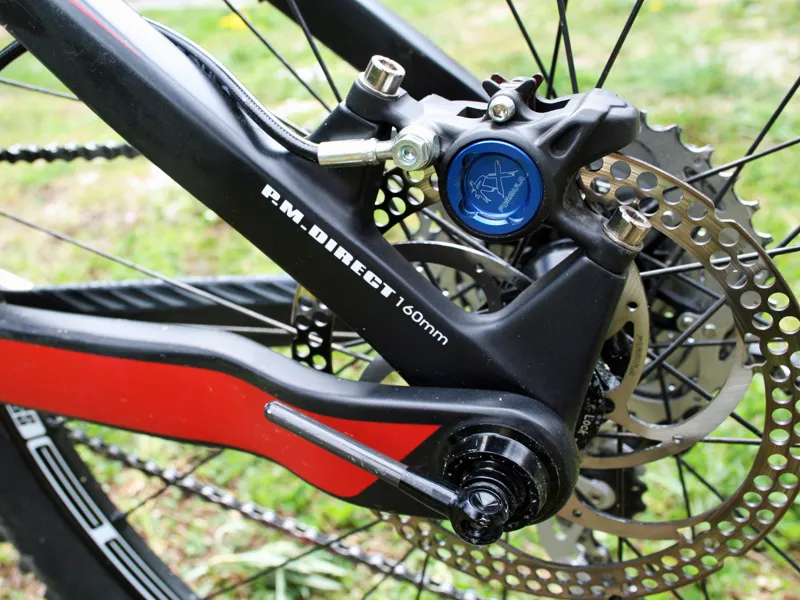
The concentric rear axle pivot separates the suspension from braking forces
The Lynx's head angle is 69 degrees – although Weagle insists that head angle measurements are meaningless and it's 'mechanical trail' (a combination of steering angle, fork offset and tyre diameter) that really matters when it comes to ride feel.
The carbon fibre frame (eight complete bikes will be available – four carbon and four alloy) has a full-carbon press-fit bottom bracket shell and tapered headset. Gear cables are routed internally, with full-length outers run inside the frame to keep crud out. The 142x12mm rear end uses SR Suntour's QLock axle system; BH say replacement dropouts will be available to work with other standards including Syntace's X-12.
The Lynx looks burly and purposeful, unlike the undernourished appearance of many 100mm bikes. But that's not to say it's heavy – BH's tagline is 'Ultralight Bicycles' and claimed frame weight for the carbon fibre model is 2.3kg/5lb (medium size, raw finish). There are lighter options out there designed purely for cross-country racing, but few, if any, that can boast the same all-round performance as the BH, if our first ride on a prototype model is anything to go by....
How does it ride?
So, on paper the Lynx looks promising, but how does it ride? BH invited us to Peisey-Vallandry to find out. Peisey-Vallandry? Yep, us neither. Turns out it's a pretty little resort in the French Alps, part of the same ski area as Les Arcs. It's a lot more low-key than the likes of Morzine, Chamonix or Les Deux Alpes, with a rustic feel, and we received a warm welcome, and excellent home-cooked food, at our lodgings – Chalet La Vigogne.
For English riders a skilift is always a luxury, and here it was opened just for us. There was still plenty of climbing to be done, but it was great to be able to start the day with a descent rather than a lung-busting climb. The long stem and narrow bar (compared to the UK-spec trail bikes we spend most of our time on) fitted to our Lynx took a while to get used to, particularly as we were immediately led down some rock and root strewn singletrack at breakneck speed.
But the prototype bike handled everything we flung at it with aplomb – especially when you consider that we'd normally choose a 140mm-travel rig for this type of Alpine terrain. The rest of the day consisted of a combination of short loops testing different suspension settings and long switchbacked downhills back to the chalet.
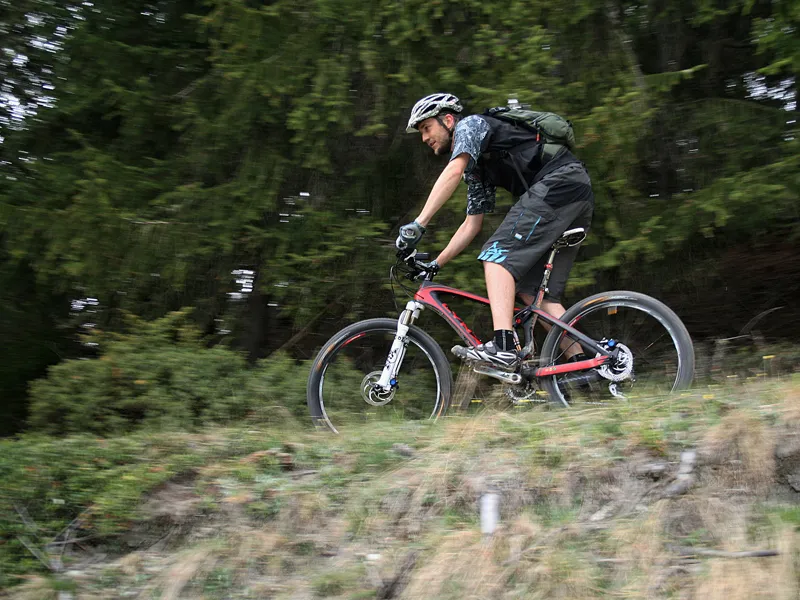
No, this grassy path wasn't typical of the terrain we tested the bike on. In fact there's a steep off-camber chute just out of picture – honest!
Only medium bikes were available – a bit of an issue for our 6ft 2in tester, but we managed to achieve a just-about-adequate climbing position through use of an adjustable seatpost run at its minimum insertion height. It still felt a little short and fidgety on the wide-open piste sections, but once into the singletrack the small frame size helped to highlight just how capable a machine this is.
Team BH Suntour will be racing the Lynx 4 on the World Cup circuit this year, along with the Ultimate hardtail. But it's way more than just a cross-country race bike. Anyone who's hit the Alps will be familiar with water bars. On a 100mm bike we'd normally err on the side of caution and slow down for an obstacle like this; on the Lynx we were happy popping a manual or pulling a bunny hop at full speed, and it never felt out of its depth.
Okay, we had one of the industry's leading experts fettling our suspension to perfection at the end of each run so you'd expect that aspect of the bike to perform well, but frame stiffness was very good too and geometry was spot-on. In the medium size, the Lynx felt almost like a four-cross bike, and we reckon it would be perfect for your average UK trail centre, with a feel more akin to a good 120mm bike than your average 100mm machine.
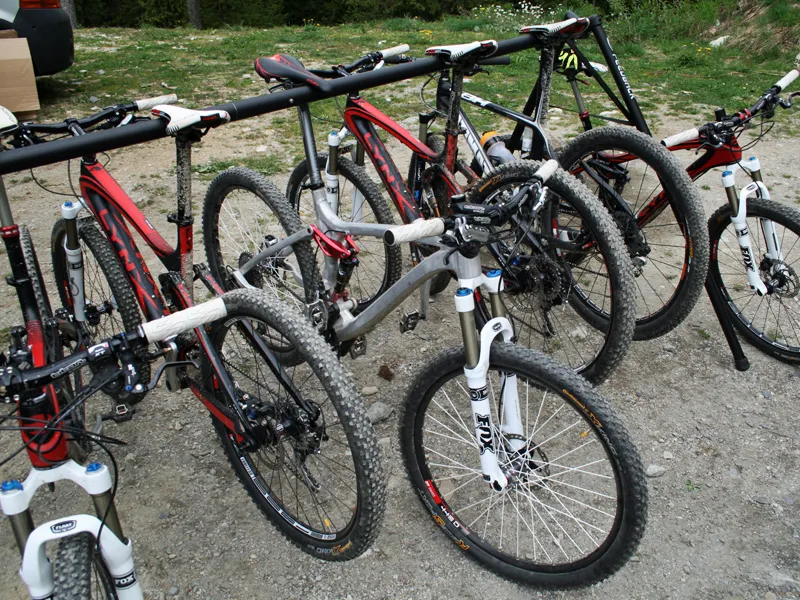
BH had this alloy prototype on display at the Lynx 4's launch fitted with a 120mm fork
On the climbs we rarely felt the need to use any platform damping – in fact, we didn't touch it the whole afternoon – because of the bob-stifling anti-squat built into the suspension design. And weight was good, at 11.6kg/25.6lb (actual, medium size, with CrankBrothers Eggbeater pedals and a sprinkling of mud) for a complete carbon bike specced with Shimano XT drivetrain, Formula R1 brakes, (tubed) Continental tyres and BH's own-brand Titan finishing kit.
If this sounds high for a cross-country race bike, bear in mind that a few judicious kit changes, such as going tubeless, could easily lop a couple of pounds off this total. An alloy prototype was also present at the launch, and this weighed in at 12.7kg/28lb, but that was with a 150mm fork (wound down to 120mm).
At the post-ride debrief, when Weagle and his BH colleagues asked for negative feedback, the best the assembled journalists could come up with was that it would be good to have shorter stems and wider bars specced as standard – high praise indeed for a 100mm bike. As Weagle himself says: "It's an atypical cross-country bike – one of a kind."
Prices have yet to be confirmed but are expected to start at around €2,000 for an entry-level alloy bike with Shimano Deore, or possibly SLX, kit. Stay tuned for more about the BH Lynx 4 on BikeRadar soon, including a closer look at the frame and an interview with Dave Weagle. We'll bring you a full review as soon as production bikes become available.

